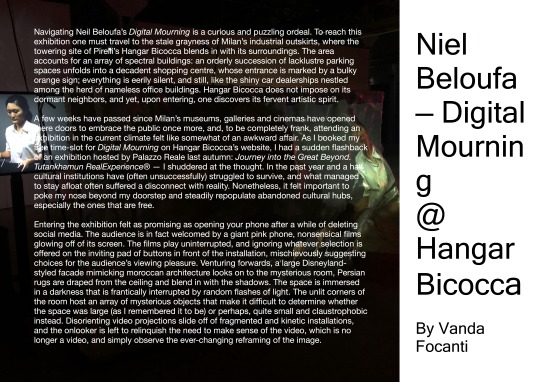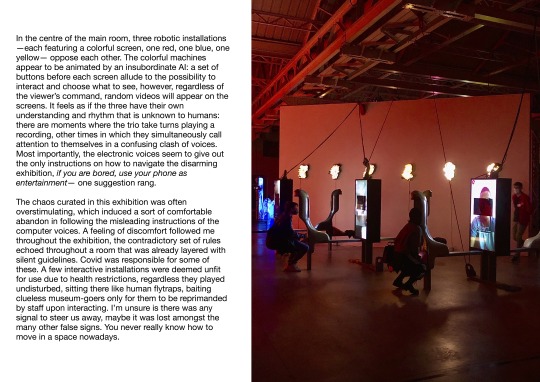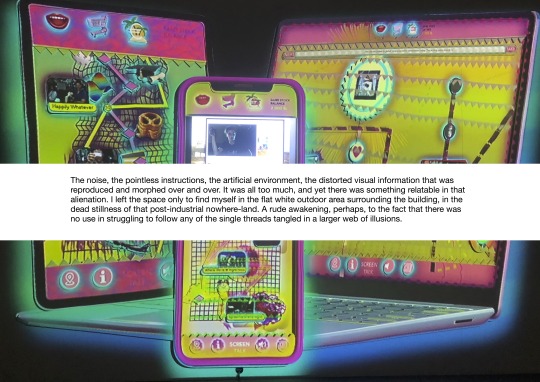Photo

Here, I review Tea Hacic-Vlacovic’s podcast, Troie Radicali. Text also featured below.
“My pronouns are Troia/Radicale”
The inimitable personality of Tea Hacic-Vlacovic radiates through her provocative (and often times drunken) podcast Troie Radicali. Hacic-Vlacovic, whose adventures often call back to the ups and downs of living in Milan’s glamorously squalid fashion scene in the early 2000s, is a Croatian-born American author who migrated to Europe’s fashion capital in her early twenties.
Tea greets her listeners at the opening of each episode with a vibrant “Ciao Troie!”. As if she were opening her door to welcome you in for an aperitivo before heading out to a party somewhere. The show, born around march 2020 is one of the most thrilling “pandemic babies” I’ve come across so far. Each episode is a clash of stories from the glossy underworld that is Hacic-Vlacovic’s life as a fashion personality turned “Night-life Historian”. The uncensored storytelling is always accompanied by a savvy and unfettered commentary on issues surrounding womanhood, sex, drugs, fashion, men, more drugs, queerness, and all of the drugs.
“Speaking English is wearing flats, speaking Italian is wearing stilettos” declares one of Tea Hacic-Vlacovic’s recent tweets. Troie Radicali, of course is hosted in Italian. Unbothered by her thick American accent, Hacic-Vlacovic expresses herself freely and incorrectly, with irreverence, charisma and — porca madonna— style. There is too much to be said to worry about linguistic inconsistencies. To top everything off, the unpredictable episode release dates and durations contribute to the curated chaos of this podcast— whose title, by the way, translates to “Radical Whores”.
One of the show’s most captivating qualities is Hacic-Vlacovic’s nonchalance in narrating her somewhat shocking life and opinions. Her submerged perspective in party culture and the Moda industry grants the listener a peek into alternative lifestyles that often hide in broad daylight. Hacic-Vlacovic unapologetically twirls between one taboo and the next while recounting her experiences with irresistible humor.
No topic is off the table; brazen and often unspoken remarks on life are always backed up by a surprising yet accurate logic. Tutti fanno schifo, SOPRATUTTO LE DONNE! (everyone is gross, ESPECIALLY WOMEN) chants Hacic-Vlacovic in the episode entitled “IL SCHIFO”. In this oddly feminist rant Hacic-Vlacovic exposes the grotesque nature of women’s bodies —from clumpy periods to horrific childbirth— probing the laughable rhetoric that women are dainty and pure creatures.
The outrageous openness and acceptance of all people and lifestyles that permeate this podcast create a safe space to challenge conventions and unleash one’s inner radical whore. Listening to Tea Hacic-Vlacovic is like taking a breath of fresh cigarette smoke with your favorite bianco after a long day surrounded by uomini del cazzo. It is like the drunk conversations you get to have with your new best friend (that you just met outside of the club). It is like reading the comment section of Lady Gaga’s newest music video.
#bestemmie#teahacic#troieradicali#troie radicali#podcast#review#culture#opinion#milan#stai zitta#femminismo#feminist podcast#night life
2 notes
·
View notes
Photo



Exhibition Review of Neil Beloufa’s Digital Mourning @ Pirelli Hangar Bicocca, Milan. Full Text provided below.
----
Navigating Neil Beloufa’s Digital Mourning is a curious and puzzling ordeal. To reach this exhibition one must travel to the stale grayness of Milan’s industrial outskirts, where the towering site of Pirelli’s Hangar Bicocca blends in with its surroundings. The area accounts for an array of spectral buildings: an orderly succession of lackluster parking spaces unfolds into a decadent shopping centre, whose entrance is marked by a bulky orange sign; everything is eerily silent, and still, like the shiny car dealerships nestled among the herd of nameless office buildings. Hangar Bicocca does not impose on its dormant neighbors, and yet, upon entering, one discovers its fervent artistic spirit.
A few weeks have passed since Milan’s museums, galleries and cinemas have opened there doors to embrace the public once more, and, to be completely frank, attending an exhibition in the current climate felt like somewhat of an awkward affair. As I booked my free time-slot for Digital Mourning on Hangar Bicocca’s website, I had a sudden flashback of an exhibition hosted by Palazzo Reale last autumn: Journey into the Great Beyond. Tutankhamun RealExperience® — I shuddered at the thought. In the past year and a half cultural institutions have (often unsuccessfully) struggled to survive, and what managed to stay afloat often suffered a disconnect with reality. Nonetheless, it felt important to poke my nose beyond my doorstep and steadily repopulate abandoned cultural hubs, especially the ones that are free.
Entering the exhibition felt as promising as opening your phone after a while of deleting social media. The audience is in fact welcomed by a giant pink phone, nonsensical films glowing off of its screen. The films play uninterrupted, and ignoring whatever selection is offered on the inviting pad of buttons in front of the installation, mischievously suggesting choices for the audience’s viewing pleasure. Venturing forwards, a large Disneyland-styled facade mimicking moroccan architecture looks on to the mysterious room, Persian rugs are draped from the ceiling and blend in with the shadows. The space is immersed in a darkness that is frantically interrupted by random flashes of light. The unlit corners of the room host an array of mysterious objects that make it difficult to determine whether the space was large (as I remembered it to be) or perhaps, quite small and claustrophobic instead. Disorienting video projections slide off of fragmented and kinetic installations, and the onlooker is left to relinquish the need to make sense of the video, which is no longer a video, and simply observe the ever-changing reframing of the image.
In the centre of the main room, three robotic installations —each featuring a colorful screen, one red, one blue, one yellow— oppose each other. The colorful machines appear to be animated by an insubordinate AI: a set of buttons before each screen allude to the possibility to interact and choose what to see, however, regardless of the viewer’s command, random videos will appear on the screens. It feels as if the three have their own understanding and rhythm that is unknown to humans: there are moments where the trio take turns playing a recording, other times in which they simultaneously call attention to themselves in a confusing clash of voices. Most importantly, the electronic voices seem to give out the only instructions on how to navigate the disarming exhibition, if you are bored, use your phone as entertainment— one suggestion rang.
The chaos curated in this exhibition was often overstimulating, which induced a sort of comfortable abandon in following the misleading instructions of the computer voices. A feeling of discomfort followed me throughout the exhibition, the contradictory set of rules echoed throughout a room that was already layered with silent guidelines. Covid was responsible for some of these. A few interactive installations were deemed unfit for use due to health restrictions, regardless they played undisturbed, sitting there like human flytraps, baiting clueless museum-goers only for them to be reprimanded by staff upon interacting. I’m unsure is there was any signal to steer us away, maybe it was lost amongst the many other false signs. You never really know how to move in a space nowadays.
The noise, the pointless instructions, the artificial environment, the distorted visual information that was reproduced and morphed over and over. It was all too much, and yet there was something relatable in that alienation. I left the space only to find myself in the flat white outdoor area surrounding the building, in the dead stillness of that post-industrial nowhere-land. A rude awakening, perhaps, to the fact that there was no use in struggling to follow any of the single threads tangled in a larger web of illusions.
#hangarbicocca#neilbeloufa#exhibition review#exhibition#art blog#culture#writing#criticism#art criticism#art#art museum#creative writing#milan
4 notes
·
View notes